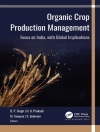This book shows the importance of rice for human consumption. It focuses on the rice panicle, its morphology and characteristics.
High genetic diversity of rice has been economically profitable for mankind; the crop provides food calories to half of the human race on earth and because of its adaptability to diversified and unstable ecological conditions, the plant has an asynchronous flowering system in the panicle. The International Rice Research Institute has a collection of panicles with numerous branching phenotypes and lengths varying from 10 to 43 cm. Due to the heterogeneous architecture, grain filling depends on the position of the spikelet within a panicle. Spikelets on apical branches fertilize early and fill faster compared to their basal counterparts and therefore, individual grain weights of panicle vary widely. The discrepancy in grain filling between spikelets changes with panicle architecture but the relationship of variation in individual grain weight with panicle architecture has not been studied. Spikelet number has increased highly in the newly developed rice cultivars, but it has no benefit accrued on grain filling and yield.
This book is recommended for students, researchers and teachers working in this field of expertise.
表中的内容
Chapter 1. Importance of rice as human food.- Chapter 2. Botany of rice plant.- Chapter 3. Ontogeny of organ development in rice plant.- Chapter 4. Fertilization and seed development in rice.- Chapter 5. The cellular basis of rice seed growth.- Chapter 6. Genetic analyses of floral development on rice panicle.- Chapter 7. Diversity of panicle architecture and traits influencing grain filling.- Chapter 8. Change of panicle architecture during domestication.- Chapter 9. Physiology of variation in individual grain weight of rice panicle.- Chapter 10. Enzymes controlling starch biosynthesis.- Chapter 11. Hormonal regulation of spikelet development.- Chapter 12. Effects of environmental stresses on physiological factors influencing grainfilling of rice panicle.- Chapter 13. Designer rice in quest of high grain filling.












